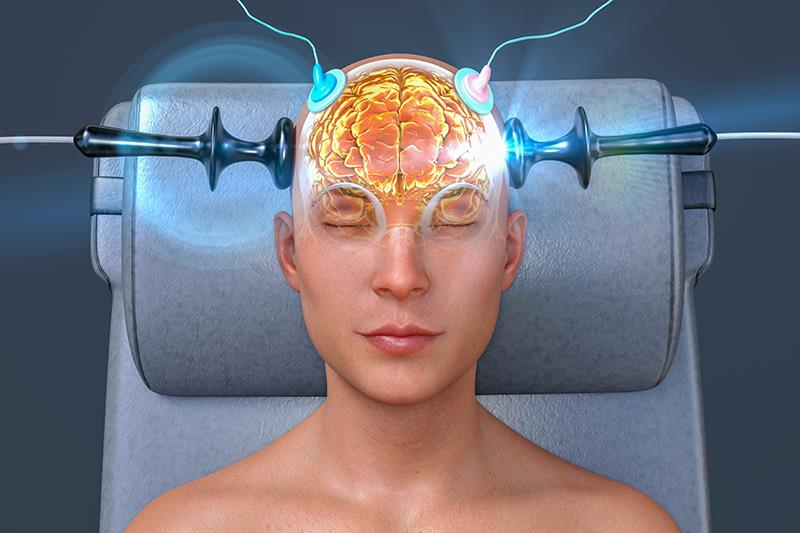ECT continuation, maintenance may be needed to prevent relapse





For patients with neuropsychiatric conditions, continued electroconvulsive therapy (ECT) can lower the likelihood of hospital readmission after a successful initial course, as shown in a study.
In a cohort of 19,944 individuals (median age 55 years, 61 percent women) who underwent an acute series of ECT (aECT; at least three treatments with a maximum interval of 7 days), hospitalization occurred at a rate of 260.6 per 1,000 person-years over a 1-year follow-up. [JAMA Psychiatry 2024;doi:10.1001/jamapsychiatry.2024.2360]
The incidence of hospitalization was lowest during the periods following the initiation of continuation* and maintenance** ECT (c/mECT) (0–180 days: incidence rate ratio [IRR], 0.51, 95 percent confidence interval [CI], 0.41–0.62; 181–365 days: IRR, 0.51, 95 percent CI, 0.39–0.65).
Compared with individuals who received aECT alone, those who underwent c/mECT had a more than 30-percent reduction in the risk of hospitalization within the first 6 months (HR, 0.68, 95 percent CI, 0.58–0.87) and the second 6 months of follow-up (HR, 0.62, 95 percent CI, 0.50–0.76).
On the other hand, c/mECT had no significant effect on suicidal behaviour.
Reduced treatment costs
According to the investigators, the effect of c/mECT on hospitalizations translated to a substantial reduction in total treatment costs (hospital admission days plus ECT expenses).
Compared with the periods before the end of aECT, c/mECT was associated with a substantial reduction in total costs (hospital admission days + ECT expenses). Total costs decreased from USD 46.2 million in the 365- to 180-day period before the end of aECT to USD 25.9 million in the 0- to 180-day period after the end of aECT followed by c/mECT and from USD 70.8 million in the 180- to 1-day period before the end of aECT to USD 17.7 million in the 181- to 365-day period after the end of aECT followed by c/mECT.
Relapse prevention
The finding on hospitalization aligns with existing literature on the efficacy of c/mECT in various psychiatric disorders. Specifically, c/mECT or cECT has been shown to help prevent relapse in both unipolar and bipolar depression, with the effect being comparable or better than pharmacotherapy alone and other inpatient treatments. [Arch Gen Psychiatry 2006;63:1337-1344; Am J Psychiatry 2016;173:1110-1118; Brain Sci 2021;11:1340; Acta Psychiatr Scand 2021;144:599-625]
Furthermore, studies on schizophrenia have demonstrated that c/mECT can help maintain clinical improvements even in patients who are resistant to other treatments like clozapine. [J ECT 2019;35:156-160; J ECT 2020;36:42-46; Schizophr Bull 2022;48:814-825]
Taken together, these data suggest that “c/mECT should be considered more often to prevent relapse after successful aECT in patients whose condition does not respond sufficiently to other interventions,” the investigators said.
In the present study, 1,533 individuals (7.7 percent) received c/mECT at any time point (5.1 percent had cECT only and 2.6 percent had mECT). Compared with patients receiving aECT only, those who underwent c/mECT were more likely to be treated for schizophrenia (odds ratio [OR], 2.14, 95 percent CI, 1.86–2.46) and schizoaffective disorder (OR, 2.42, 95 percent CI, 1.90–3.09) and less likely for unipolar depression (OR, 0.56, 95 percent CI, 0.51–0.62).